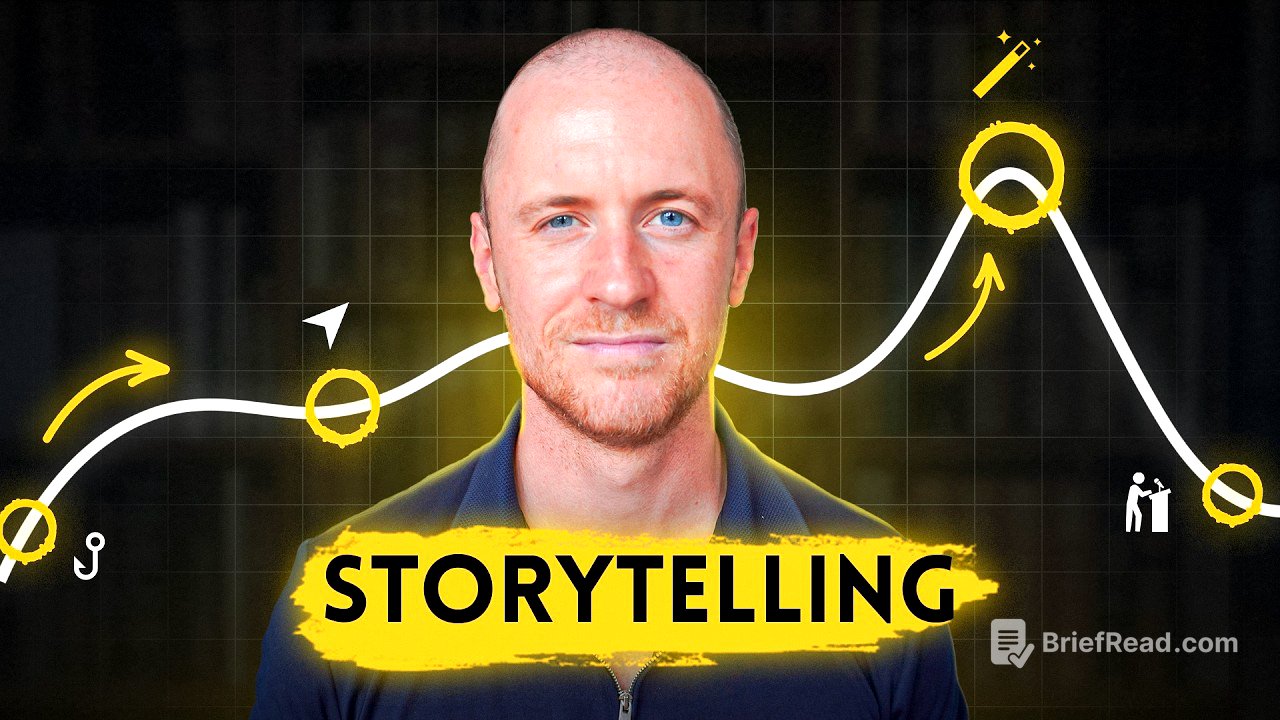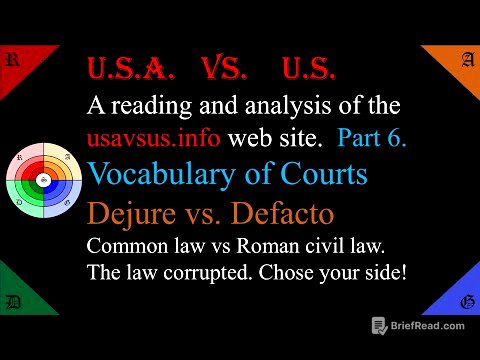TLDR;
This video provides five storytelling techniques to captivate listeners. It emphasises zooming into specific moments rather than summarising events. The techniques include setting the location, describing actions, sharing thoughts and emotions, and using dialogue. The video uses examples from John Krasinski and Sarah Willingham to illustrate these techniques.
- State the location to allow the audience to visualise the scene.
- Describe actions to create forward momentum and engage the listener.
- Share raw, unfiltered thoughts to make the story relatable.
- Show emotions through body language and expressions for a visual impact.
- Use dialogue to add interest and capture the essence of the conversation.
Introduction: The Power of Storytelling [0:00]
The video introduces storytelling as a powerful tool for engaging listeners, and promises to simplify the process by focusing on what truly matters. It uses a short anecdote from John Krasinski to illustrate the importance of zooming into specific moments rather than summarising events. Krasinski's story about being recognised as Emily Blunt's husband at customs serves as an example of effective storytelling through detailed interaction.
Technique 1: Location [1:33]
The first technique involves stating the location at the beginning of the story to allow the audience to visualise the scene. Examples include "sitting on my couch in my living room" or "standing in front of the conference room". The video stresses that providing too many details about the location is unnecessary; simply stating the location is enough for listeners to create their own mental image.
Technique 2: Actions [2:29]
The second technique focuses on describing the actions taking place in the story. Instead of providing excessive context, the storyteller should concentrate on what they were doing at that specific moment, such as walking, biking, or reading. Examples include "I open my laptop and start reading a message by my manager" or "I'm at the airport waiting in line at security". Stating the actions creates forward momentum and immediately engages the listener.
Technique 3: Thoughts [3:16]
The third technique involves sharing the thoughts that were going through the storyteller's mind during the crucial moment. Instead of saying "I was excited to meet my crush," the storyteller could say, "I thought, 'This will be so cool!'" The video advises against sharing thoughts that sound too professional or intellectual, and encourages the use of raw, unfiltered, and slightly neurotic thoughts to make the story more relatable.
Technique 4: Emotions [4:29]
The fourth technique emphasises the importance of conveying emotions in a visual way. Instead of simply stating an emotion, such as "I was relieved," the storyteller should show how the emotion manifested physically, such as "I leaned backward and let out this big sigh." Showing emotions through body language and expressions makes the story more vivid and engaging.
Technique 5: Dialogue [5:37]
The fifth technique involves using dialogue to bring the story to life. Instead of summarising what someone said, the storyteller should quote the exact words spoken during the crucial moment. For example, instead of saying "My friend was very disappointed," the storyteller could say, "My friend looked at me and said, 'Phillip, what on Earth was that?'" The video advises using interesting and catchy dialogue rather than boring or overly formal language.
Storytelling in Action: Sarah Willingham's Example [6:54]
The video presents a story by Sarah Willingham, a British entrepreneur, to illustrate the five storytelling techniques in action. Willingham's story about being mistaken for a coffee maker during a meeting at Pizza Express demonstrates how location, actions, thoughts, dialogue, and emotions can be woven together to create a compelling narrative. The story highlights the power of turning a misjudgment into a moment of empowerment.
Conclusion: Advanced Storytelling Techniques [8:33]
The video concludes by summarising the five foundational storytelling techniques and suggesting further exploration of more advanced techniques. It encourages viewers to check out another video for further learning on how to become a better storyteller.







![[IMP] Complete the microtheme loop for prelims & mains || UPSC 2026/27](https://wm-img.halpindev.com/p-briefread_c-10_b-10/urlb/aHR0cDovL2ltZy55b3V0dWJlLmNvbS92aS9EWlVhZjVFS2dzYy9ocWRlZmF1bHQuanBn.jpg)

